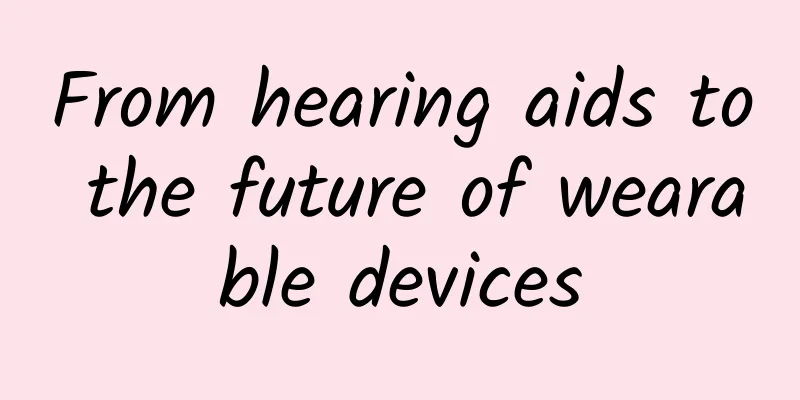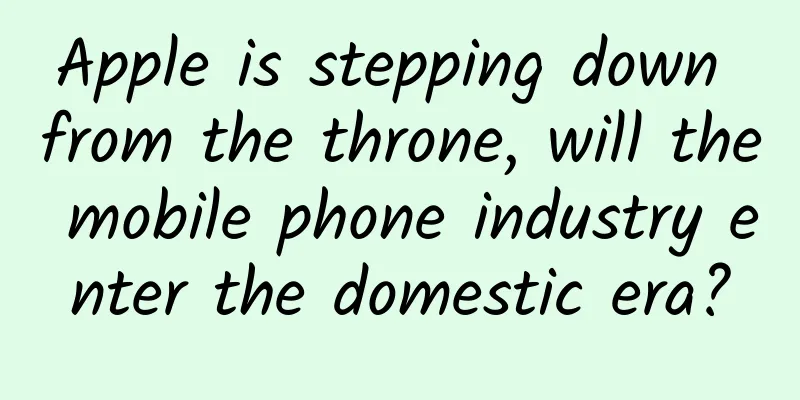From hearing aids to the future of wearable devices

|
On February 6, wearable devices have become more and more integrated into our lives. Recently, a special user presented his unique experience and ideas to the world through the Atlantic Monthly website, bringing us a new idea about wearables. The following is the main content of the article: I've been using wearables for a long time, long before Google Glass, Apple Watch, and Moto 360, or devices that tell you how many steps to take, how to run, sleep, or eat. My first experience with wearables seems to have been in 1986, when I was 5 years old. I've worn something since I was a kid - hearing aids. Many people don't need them, and many of today's wearables have some similarities to hearing aids. Soon, microcomputer systems will become part of your body, just as I have for nearly 30 years. Because of my own experience, I can make some predictions about the future of wearables. Of course, hearing aids are medical devices and face very different legal regulations than consumer electronics, so some features will never appear on consumer products. But putting that aside, medical products and consumer wearables share several common goals. They both aim to enhance various human capabilities, they both need to be worn on the body, and they both need to be seamlessly integrated into our own experience. In the next few years, I think we will see the following four trends, and wearable devices will evolve from toys to tools. 1. Wearables will create alternative realities Wearable devices will provide more functionality than additional screens or input devices. Devices equipped with various sensors can intervene between reality and our experience, changing our perception of the world around us. Take hearing aids for example. Previous devices simply amplified the surrounding sounds, but today's technology can adopt different strategies based on environmental changes. For example, when I walk into a noisy restaurant, the device recognizes the clinking of glasses and distant conversations, and filters them out, only feeding me the nearby voices. This acoustic experience is significantly different from objective reality. The device presents the changed reality in front of me, making it easier for me to understand and apply it. Microsoft 's recently launched holographic glasses also take similar steps. By superimposing various images on the real world, users can see more intuitive instructions and instructions. Future wearable devices will be between our experience and reality, helping us understand reality more deeply. 2. Algorithm-driven Alternative realities mean that our understanding of the world around us is increasingly processed and determined by algorithms. Let’s take the hearing aid example again. The algorithm determines whether the sound coming from the refrigerator compressor is coming from a friend’s greeting. If everything is fine, I won’t hear the compressor; if something is wrong, I won’t hear my friend’s greeting. Medical devices already use more sophisticated algorithms. Hearing aids use algorithms to decide which sounds to amplify and which to mute; pacemakers use algorithms to decide when to send electrical impulses to the heart; and artificial pancreases use algorithms to decide when to release more insulin. In these cases, algorithms do more than reshape our perception of reality—they take on life-threatening responsibilities. Algorithms can do more. For example, by recognizing facial emotions, you can anticipate the appropriate approach to your boss. Algorithms can also block ads that you find offensive while keeping posters that interest you. Devices will become more customizable in the future. My hearing aids have 20 independently adjustable audio channels, and my doctor usually prescribes 6 or 7 of them for me. If a product doesn’t offer a way for users to personalize it, they will be abandoned. 3. Faults become difficult to identify The more we rely on wearables to interact with society, the more important the issue of device failure becomes. And the more seamless the experience becomes, the harder it will be to detect problems. Some problems are very obvious. For example, if a hearing aid stops working, it’s easy to spot and fix. However, some problems are less obvious. Once, I was sitting next to a loud air conditioner while meeting a friend, and I found it difficult to hear the conversation across the table. I knew my hearing aid would help me reduce ambient noise, but the hearing aid works based on an algorithm, and it was difficult for me to tell whether it was a device malfunction or the air conditioner itself being too loud. Providing devices that are too customized makes it difficult for users to tell what the problem is, which is a major challenge for future product design. 4. Wearables will record everything If the problem becomes difficult to identify, the device needs to record sufficient data for analysis. As the behavior of the device is highly dependent on environmental context and external feeds, the more relevant data, the more it can help analyze the problem. After an air crash, investigators first need to find the black box, because it is impossible to reconstruct the accident scene. Only by analyzing the various data at the time can the real cause be discovered and the corresponding lessons learned. The challenges faced by wearable devices are similar. When I told my doctor that my hearing aids weren’t working well in a noisy restaurant, the doctor had to make adjustments based on guesswork and experience, since he couldn’t provide the source of the ambient sound. For the user, this is a process of trial and error, which can obviously be frustrating. The latest hearing aids now record audio signals in specific environments for later analysis, and consumer devices can take similar steps to improve the user experience over time. When I first got my hearing aid, the doctor adjusted it with a screwdriver; now, the doctor can adjust it wirelessly on a computer. I am sure that similar changes will happen to consumer wearables. At present, people still regard wearables as toys or luxury goods. However, as the products mature, they will be able to greatly improve and enhance our daily life experience, just as hearing aids changed my life experience in 1986. We cannot ignore the existence of these trends, and wearable devices will inevitably become an inseparable tool in our lives. As a winner of Toutiao's Qingyun Plan and Baijiahao's Bai+ Plan, the 2019 Baidu Digital Author of the Year, the Baijiahao's Most Popular Author in the Technology Field, the 2019 Sogou Technology and Culture Author, and the 2021 Baijiahao Quarterly Influential Creator, he has won many awards, including the 2013 Sohu Best Industry Media Person, the 2015 China New Media Entrepreneurship Competition Beijing Third Place, the 2015 Guangmang Experience Award, the 2015 China New Media Entrepreneurship Competition Finals Third Place, and the 2018 Baidu Dynamic Annual Powerful Celebrity. |
<<: One year after Huang Zhang’s comeback: Meizu’s de-familyization revolution
>>: Is Apple going backwards by changing its computer chips?
Recommend
2022 Virtual Project Practical Guide, How to Build a Store with a Monthly Income of Ten Thousand Yuan from Scratch for Beginners [Video Course]
2022 Virtual Project Practical Guide, Novices Cre...
Best Practices for Electron Application Development
1. Background In the team, we need to use desktop...
What is the investment price of Neijiang Machinery Equipment Mini Program? Neijiang Machinery Equipment Mini Program Merchant Price Inquiry
What is the investment promotion price of Neijian...
Electric Technology Car News: With the increasing homogeneity of hard-core off-road vehicles, can the Patrol compete with the Prado with a unique price cut?
When it comes to Japanese hard-core off-road vehi...
App launch growth: user awakening methods
In daily App promotion , attracting new users and...
Guangdiantong optimization tips and precautions
Guangdiantong is a DSP advertisement based on Ten...
How much does it cost to attract investment for the Zunyi check-in mini program?
How much does it cost to attract investors for th...
E-commerce agent operation: Do you want to find an agent to operate?
1. Think outside the box of operations and look a...
How to operate corporate Douyin, how to operate a company Douyin account?
We use TikTok to let more people know your brand,...
Manual for identifying “high-quality imitation” edible fungi | Do you know about these high-risk “health foods”?
From the New Year's Eve dinner to the reunion...
Douyin operation: Enterprises, you must not do Douyin!
Companies must not do TikTok! In 2019, ByteDance’...
Can fitting rooms become an important O2O scene in the clothing industry?
Regarding the Uniqlo nude photo scandal, as the f...
Event operation and promotion, 6 common ways to play with red envelopes!
Red envelopes are one of the common marketing met...
In Shanghai, people are already eating cacti from flower pots
Editor's note: Calendar Girl recently receive...
The "emotional guru" who teaches you how to win back your ex actually just started working last week
When Chu Chu saw that the "teaching material...









